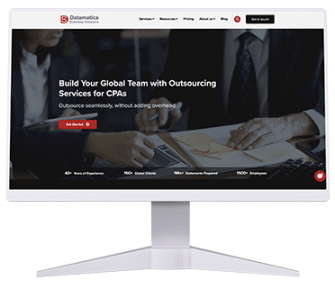The Revolution of RPA in the Business Arena
Robotic Process Automation (RPA) is the cornerstone of every thriving business in the modern world. Its avant-garde ability to streamline the business process with ease and automate the repetitive, manual, stagnant work has placed it at the forefront of human-technology collaboration. As quoted by McKinsey, a global leader in management consulting, “RPA takes the robot out of the human,” which means an average worker puts a lot of effort into performing routine, repetitive tasks that are dreary. It eradicates the mundane tasks that take away precious time from an employee’s productivity hours, makes the entire process a lot more efficient, and allows the business owners to focus on strategic initiatives rather than worrying about the mundane tasks.
RPA is software that mimics the human brain’s activities to complete a task. It accomplishes tasks more quickly, tirelessly, and accurately than humans. It allows human brains to achieve tasks that require human intelligence, such as emotional intellect, judgment, reasoning, and intellectual communication with the customer. In short, RPA adds a synergetic component to human functioned productions. According to Gartner, “robotic process automation software revenue increased by 63.1% in 2018 to 846 million, making it the fastest-growing global enterprise software market segment.”
RPA and Data Management – A Perfect Match
Robotic Process Automation (RPA) and Data management are two streams of technology that incredibly complement each other. The delicate blend of data and RPA can be used to find the glitches in business practices and help companies streamline their business processes. Data management requires several monotonous tasks, including data aggregation and curation, all of these tasks can easily be handled by automation. Practicing RPA to simplify a massive amount of data makes jobs such as data wrangling, data cleansing, data updating, normalization, and data creation quick and efficient. Each of these tasks demands special consideration. While they can easily be handed over to automation, you need to ensure that there is human intervention at equal intervals to ensure that the task is being executed as per the requirement and within the bounds of the regulatory guidelines.
Apart from the arduous task of managing enormous data, companies are majorly struggling with the issue of constantly downgrading data quality. For most businesses, trusted data has become a myth. In the cut-throat corporate world, marketers need accurate data to succeed in marketing automation, but in reality, they are facing a hard time staying on top of data hygiene. Inaccurate, incomplete, age-old, invalid data mislead the conversion insights and reduce marketing campaign optimization potency. 95% of organizations see the effects of poor-quality data on business output. As an impact of the lack of trusted data, 1/3rd of the organizations cannot achieve top business initiatives.
Do you know several factors vandalize the quality of the data and turn it into the most significant pain point for the organizations? Yes, have a look:
The Biggest Contributors to Falling Data Quality:
- 50% Human error
- 39% Too many data sources
- 30% Inadequate data strategy
- 26% Current relevant technology
Despite the growing demand for data and insights, organizations still are relatively immature in their data management practices. It has resulted in the loss of revenue for the businesses and has affected their employees, as they face the fatigue of doing the mundane tasks daily. Companies that have or are leveraging automation in their data management function have seen a significant increase in their process efficiency and employee satisfaction. It’s high time that companies execute the RPA process, clear the human-made data errors and ensure accurately, valid, sound, reliable, and complete data.
Hybrid Data Cleansing Model
The hybrid data cleansing model is an advanced version of RPA that implies robotic efficiency and human intelligence to deliver the utmost quality data. It is a holistic combination of robotic process automation, artificial intelligence, machine learning, and natural language processing. This unconventional robotic data science mechanism consists of 80% RDS contribution and 20% human expertise that transform the inadequate data into the revenue-generating asset in turnaround time. Check out the levels of Hybrid Data Cleansing below:
Robotic Data Science (80% Contribution) | Human Expertise (20% Contribution) |
|---|---|
Step 1: The bots, namely TROVA, LEMMA & GWEN, inspect the data thoroughly and update the necessary company and individual details.
TROVA: Holds an intelligence to scan and update the email IDs of the subject available on the public search LEMMA: Consists ability to scan and update multiple details of an organization, such as The website address, headquarter location, official contact number, Industry, fax number, etc. GWEN: Comprises built-in excellence to scan and extract the company websites available on open source | Step 2: The human expertise examines the data to the core and resolves the exception data errors.
Drive operation control, Offer domain knowledge |
100% Quality Data | |
With the advancement in data security and encryption area, enterprises can quickly adopt a data-centric approach in their day-to-day operations. We work with businesses of all sizes to help them with their data management, data enrichment, and data cleansing process; we have observed that while there are apprehensions at the beginning of going for an outsourcing partner for data enrichment, these apprehensions disappear right from the very first discussion and demonstration of our database quality management model.
 Select an element to maximize. Press ESC to cancel.
Select an element to maximize. Press ESC to cancel. Select an element to maximize. Press ESC to cancel.
Select an element to maximize. Press ESC to cancel.Conclusion
Many companies are unaware of the real potential of their data because they are either under-investing their valuable time or resources in building a data management strategy or still are far away from having a data management strategy in place. The amount of data generates every day is ever-growing; there is no way it will slow down any time sooner. But with the growing amount of user-generated data (UGC), data quality has become a concern. This is why business leaders across the globe have made it their priority to have an effective data management strategy in place. Many businesses have turned to outsource for their data management needs, and we don’t see why you should not.
 Select an element to maximize. Press ESC to cancel.
Select an element to maximize. Press ESC to cancel. Select an element to maximize. Press ESC to cancel.
Select an element to maximize. Press ESC to cancel.
Raajiv Sachdeva


